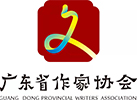
标题

标题
内容
首页 > 自定义类别 > 海上丝绸之路文学发展论坛 > 发言
版权贸易推动中外文学翻译与交流
更新时间:2018-11-11 作者:张洪波来源:广东作家网
中国与海上丝绸之路沿线国家和地区有着悠久的文学翻译与交流传统。以文学作品为中心,我们可以演绎出很多作品形态,通过多种载体、形式、方式、渠道、媒介去传播、去消费。版权贸易与版权合作在文学翻译与传播过程中发挥着不可替代的作用。应该讲,版权贸易与合作是中外文化贸易的主要方式。而文学作品是各国和地区文化人交流最受欢迎的作品类型。
通常的版权贸易包括版权引进与输出,比如翻译权、发行权、发表权、复制权、汇编权、影视剧游戏改编权、发行放映权、出版权、广播权、表演权、信息网络传播权等。即使版权保护期已经进入公有领域的作品,即所谓的“公版”作品,在翻译出版、改编演绎过程中,还存在署名权、改编权、保护作品完整权的保护问题,这些精神权利永远受保护。
而以版权内容为核心,围绕资本、发行、渠道、营销、海外渠道等开展的版权合作,可以有合作出版、合作办报办刊、合作办出版社(编辑部)、合作拍片、委托加工制作、委托印刷、影视游戏质押融资、衍生品授权开发等多种形式,由文学作品发表、出版、改编演绎成卡通动漫产品,可以开发衍生出儿童用品、旅游商品、实用艺术品……产业链还可以无线延伸、扩展,如主题公园、房地产楼盘外观、特色小镇等等。版权贸易横跨多个产业、领域。
一言以蔽之,版权贸易不但可以让文学作品实现国际传播,还可以让文学作品实现应有的市场价值。
通过专业版权机构的市场化运作,文学作品可以实现多国多地区、多领域、多层次、多形态、多载体、多次的传播,也就是所谓的“立体”版权运营、全版权运营。中国文字著作权协会不但将很多中国名家文学作品版权输出到多个国家,还输出电子书、有声书等版权,甚至推动很多作品进入海外教材或教辅。
中国政府高度重视中外文学翻译与文学交流。国家层面和地方政府均出台了多项鼓励文学翻译、出版的政策,包括资助出版项目、互译项目等,鼓励国内文学家、出版社、版权机构积极输出版权,同时也鼓励、扶持海外汉学家、翻译家、出版商翻译出版中国文学作品,书写中国,向世界展示当代中国经济社会的成就和中华优秀传统文化。事实证明,政府的资助政策对中外文学翻译交流有重要的推动作用,同时各市场主体也要遵循市场规则,开展自主经营,增强市场活力。
在通过版权输出形式,大力输出中华优秀文化和文学作品的同时,我们还要积极引进各类优秀作品,相互尊重,合作共赢。我们要善于发挥和整合海外资源,如我国驻外使领馆、海外中国文化中心、海外孔子学院,要格外重视海外汉语教育教学机构、汉学研究机构、汉学家、图书馆、媒体等资源,利用重要时间节点、国家重要活动,积极开展版权贸易和文学交流,努力让更多文学作品进入海外主流渠道。
多年来,英国、新加坡、韩国、日本等国家和我国香港特别行政区出版的多种汉语教材、教辅收入了很多中文作家、翻译家作品,均由文著协授权。文著协也在努力推动纸介质图书与电子书、有声书,剧本出版与戏剧表演联动,文博系统文创开发,中华传统文化与汉语教学等一书多语种、多国家、多载体、多形式、多渠道的版权开发。
因此,走出去的关键是选准走出去的切入点、选准优秀的汉学家、出版机构合作伙伴,打通部门之间的行业壁垒,整合海外渠道和资源,做好海外营销。中华文化走出去,要格外重视“质”,努力推广中国名家名作,不断提升和扩大中国文学海外影响力。
当前,中外文学翻译与文化交流赢来了前所未有的大好时机,传承发展中华优秀传统文化是全体中华儿女的共同责任。中国文字著作权协会作为专业的国家级版权服务机构,负责全国报刊和教材稿酬转付的法定职能,与“一带一路”沿线主要国家和地区保持长期的合作关系,长期致力于通过版权贸易与版权合作,举办有关海外营销活动,推动中外文学翻译与文化交流,已经成为中华文化“走出去”的重要平台。我们愿意发挥自身优势,积极协调海外渠道和海外资源,推动广东文学走向世界。
Role of Copyright Trade in Pushing for Literary Translation and Exchange
Zhang Hongbo(China)
Literary translation and exchange represents a long-standing tradition between China and other countries along the Maritime Silk Road. Literary works, being the genre most popular with cultural exchangers across countries and regions, enable us to produce, spread and consume many other forms of works across varying carriers, patterns, modes, channels and media. Copyright trade and copyright cooperation are an irreplaceable force for literary translation and exchange, arguably as a main way of cultural trade between China and the rest of the world.
In general, copyright trade refers to the import and export of copyrights, such as rights of translation, distribution, publication, reproduction, compilation, adaptation (to films, teleplays or games), showing, publishing, broadcasting, performance and dissemination via information network. Even after a piece of work enters the public domain as its copyright term ends, becoming a piece of “copylefted” work, its rights of authorship, adaptation and integrity remain valid, because these moral rights are permanently protected.
Copyright cooperation involves capital, distribution, channel marketing and overseas channels, focusing on copyrighted content. It can be found in links of publishing, newspaper or magazine running, press (editorial office) setup, film making, consigned processing, consigned printing, pledge financing for films, teleplays or games and authorized development of derivatives. As such, literary works can be published and adapted into cartoons or animations, and inspire children's products, tourist commodities and works of applied art. This industry chain can be extended in a boundless way to theme parks, sand tables of commodity houses and characteristic towns among others. That is, copyright trade spans multiple sectors and circles.
In short, copyright trade helps international communication of literary works meanwhile enabling desired market value of literary works to be realized.
A professional copyright operator can lead literary works to spread frequently across countries, regions, sectors, levels, forms and carriers leveraging means of marketing. This is so-called “stereoscopic” or all-copyright operation. For example, the China Written Works Copyright Society (CWWCS) is committed to exporting copyrights of Chinese famous literary works and even e-books and talking books, to different countries. Thanks to its efforts, many Chinese works have been included in foreign textbooks or teaching aids.
The Chinese government pays greater attention to literary translation and exchange. Both the central government and local governments have unveiled encouraging policies such as subsidies for publication and translation projects, in ways that motivate Chinese writers’, presses’ and copyright operators’ enthusiasm for copyright export. Also, these policies seek to help overseas sinologists, translators and presses translate or publish Chinese literary works as a means to present China’s achievements in economic and social wellbeing and excellent parts of Chinese traditional culture. As it turns out, they are an important pusher for literary translation and exchange. Alongside that, market entities involved need to renew their commitment to autonomous management in alignment with market rules, thereby making the market more vigorous.
As China makes every effort to export its cultural essences and outstanding literary works, we need to introduce various foreign excellent works on a mutual-respect and win-win basis. To this end, we must capitalize on and integrate overseas resources represented by Chinese embassies and consulates, overseas Chinese Culture Centers and Confucius Institutes, and pay greater attention to overseas Chinese language education institutions, sinology research institutions, sinologists, libraries and media. On that basis, copyright trade and literary exchange activities can be organized at selected time points through national important events, so as to put more Chinese literary works on overseas mainstream markets.
Over the years, many works of Chinese writers and translators have been included in Chinese language textbooks or teaching aids published by the UK, Singapore, South Korea, Japan and Hong Kong with the authorization of CWWCS. Furthermore, CWWCS has worked hard to boost copyright operations across languages, countries, carriers, forms and channels, such as linkage between paper books and e-books, talking books, scripts and dramas, development activities in the museology, cultural and creative community, and Chinese traditional culture and Chinese language teaching.
As we work to go global, it is important to select effective entry points, outstanding sinologists and reputable presses, break silos across departments and integrate overseas channels and resources necessary for overseas marketing. For this, we must give more priority to quality, and do more to promote Chinese famous works as a way to make Chinese literature more influential in foreign countries.
Now literary translation and exchange enjoys unprecedented exciting opportunities. To carry forward excellent parts of Chinese traditional culture is a responsibility shared by all Chinese people. As a state-level professional copyright service provider, CWWCS performs the statutory function of transferring payments of authors’ remunerations in the national press and textbook community. Additionally, backed by long-term cooperation with B&R countries and regions, it organizes overseas marketing activities that help literary translation and exchange as part of its commitment to copyright trade and copyright cooperation. In so doing, CWWCS has been an important platform that enables Chinese culture to go global. We are willing to lead Guangdong’s literature to the world stage by drawing on our strengths in coordinating overseas channels and resources.